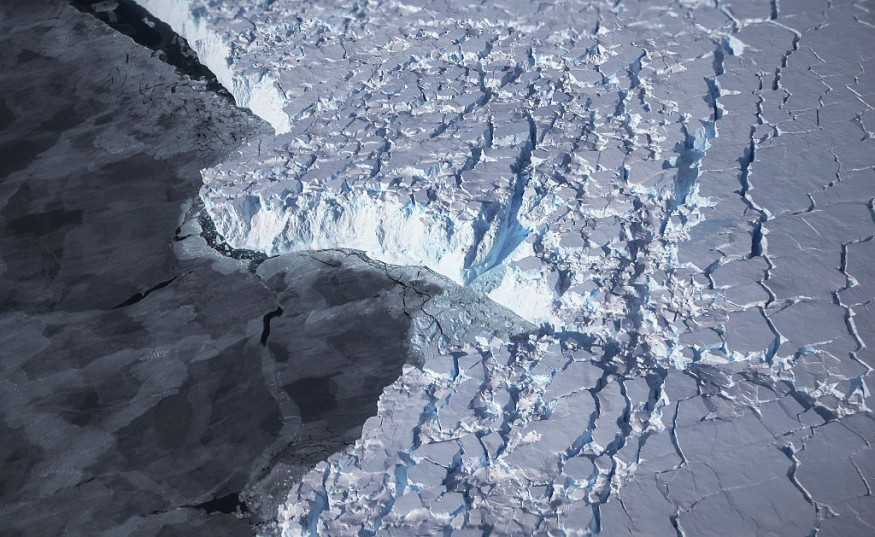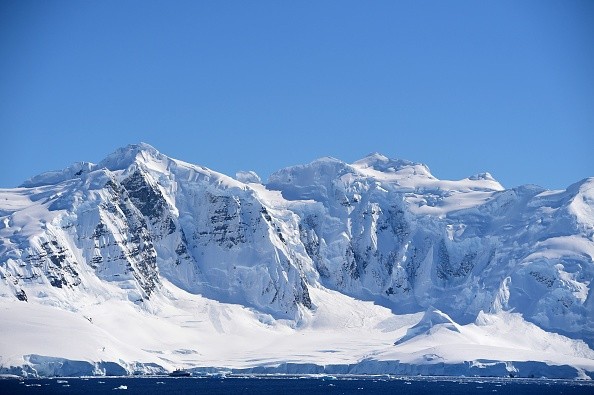Swarms of microscopic shrimp-like organisms live beneath a gigantic Antarctic ice shelf, in a cathedral-like cavern hundreds of meters high, in a newly found underwater habitat that had been an ice-locked secret until recently.

New Zealand scientists discovered the habitat 500 meters beneath the ice in a hypothesized estuary hundreds of kilometers from the Ross Ice Shelf's edge.
Studying Under the Ice
Researchers from universities in Wellington, Auckland, Otago, the National Institute of Water and Atmospherics (Niwa), and the Geological and Nuclear Sciences were funded by Antarctica New Zealand to explore the role of the estuary in climate-induced ice shelf melt.
However, when they dug through the ice and into the river, amphipods, little organisms related to lobsters, crabs, and mites, swarmed their camera.
"At first, we assumed something was amiss with the camera," Niwa's Craig Stevens explained, "but when the focus improved, we spotted a swarm of arthropods roughly 5mm in size."
They'd done studies in other ice shelf regions and believed they knew what was going on, but this time there were some huge shocks.
A Surprising Discovery
According to Stevens, while the mission was motivated by climate change, there was also an element of discovery.
They were ecstatic because all those critters swimming about their gear indicated that there was undoubtedly an important ecology present.
Huw Horgan of Te Herenga Waka Victoria University of Wellington, who leads the project, was the first to notice the estuary while studying satellite imagery of the Ross Ice Shelf.
Researchers have known about a network of secret freshwater lakes and rivers beneath the Antarctic ice sheets for some years. Still, they have yet to be physically investigated, according to Horgan.
"Being the first to see and experience this river seemed like entering a secret universe."
He stated that instruments had been placed in the river to record its behavior and that lab researchers would look into what makes the water so special.
The team's discoveries went even further: it had recently installed its mooring just days before the massive eruption of Tongan volcano Hunga Tonga-Hunga Ha'apai. As the wave passed through the hollow, the team's equipment noticed a considerable pressure shift.
"Here we are, in a neglected corner of the earth, observing real-time effects from events that felt worlds away," Stevens said after witnessing the eruption's consequences. It was very amazing."
Enduring Under the Ice

Because of the prevalence of sea ice along the Antarctic coast, organisms must be able to endure lengthy periods of time without light. Plants and animals that live beneath sea ice along Antarctica's coast must withstand long periods of darkness since the ice blocks light.
Plants and animals that dwell beneath the sea ice have adapted to the cold and lack light.
Those who live in places where sea ice forms must be able to go without light for extended periods of time. Plants on the seafloor, such as algae, can only use the sun's energy to generate food (photosynthesis) in the summer. They must survive on stored energy for the remainder of their lives. This indicates that they develop slowly.
For similar news, don't forget to follow Nature World News!
© 2025 NatureWorldNews.com All rights reserved. Do not reproduce without permission.





